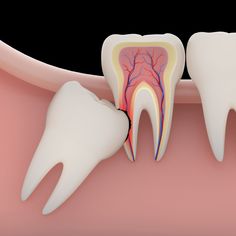For More Information on Reviews Visit Our Clinic Profile

Wisdom teeth are the third set of molars that typically emerge in your late teens or early twenties. While some people experience no issues, others may face pain, crowding, or infections as these teeth grow in improperly or fail to emerge completely.
Types Of Wisom Tooth Removal Treatment
Simple Extraction
Surgical Extraction
Performed when the tooth has fully erupted.
Required for impacted wisdom teeth or those stuck beneath the gum line.
Wisdom Tooth Removal Treatmnet are recommended when ?
- Pain or swelling around the back of your jaw.
- Crowding of adjacent teeth.
- Recurring infections or gum disease.
- Tooth decay or cyst formation around the wisdom tooth.
What to Expect During a Wisdom Tooth Removal Procedures?
- Preparation: Local anesthesia or sedation is administered.
- Extraction: The dentist removes the tooth, which may involve cutting the gum and bone in surgical cases.
- Closure: Stitches are placed if needed, and the area is cleaned.
Post-Treatment Care for Wisdom Tooth Treatment
- Rest: Avoid strenuous activities for 48 hours.
- Ice Packs: Apply to reduce swelling during the first 24 hours.
- Soft Foods: Stick to soups, yogurts, and smoothies.
- Avoid Smoking and Straws: These can disrupt healing.
- Oral Hygiene: Rinse with warm salt water but avoid brushing the surgical area for 24 hours.
Why Choose Wisdom Tooth Removal Treatment
- Cleaning the Cavity: The dentist removes decayed material.
- Filling Material: Composite resin, amalgam, or other materials are used.
- Shaping and Polishing: Ensures a natural look and feel.

